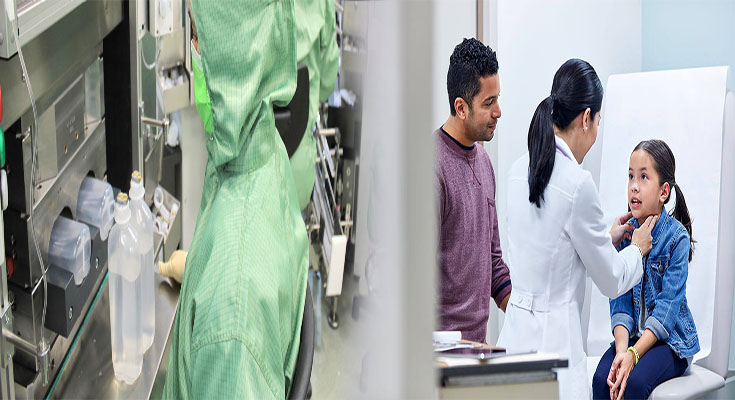Pharmacy in Indonesia encompasses a rich history, a dynamic present, and a future marked by significant developments and challenges. As an essential component of the healthcare system, pharmacy in Indonesia plays a crucial role in ensuring the effective management of medications, promoting public health, and advancing pharmaceutical sciences. This article provides a comprehensive overview of pharmacy in Indonesia, covering its historical development, current structure, and future prospects.
Historical Development
Colonial Era
Pharmacy in Indonesia began to take shape during the Dutch colonial period. The early focus was on meeting the pharmaceutical needs of the colonial administration and expatriate communities. The Dutch introduced formal pharmaceutical training and established early pharmacy practices, primarily centered around the production and distribution of medications for colonial use. The colonial period laid the groundwork for the institutionalization of pharmacy but also reflected the imbalances of the time, focusing more on serving colonial interests than local healthcare needs.
Post-Independence Era
After Indonesia gained independence in 1945, the pharmaceutical sector underwent significant transformation. The establishment of the Indonesian Pharmacists Association (IAI) in 1961 marked a pivotal moment in the professionalization of pharmacy. This period saw the development of pharmacy education, the introduction of regulations, and the establishment of professional standards. The focus shifted towards addressing the healthcare needs of the Indonesian population, improving access to medications, and integrating pharmacy practice into the national healthcare system.
Modern Developments
In recent decades, pharmacy in Indonesia has continued to evolve, driven by advancements in pharmaceutical sciences, changes in healthcare policies, and increased emphasis on professional development. The integration of modern technologies, the expansion of pharmacy education, and the adoption of new regulatory frameworks have all contributed to the growth and modernization of the field.
Current Structure of Pharmacy in Indonesia
Educational Institutions
Pharmacy education in Indonesia is provided by a network of universities and institutions across the country. The undergraduate program typically leads to a Bachelor of Pharmacy degree (Sarjana Farmasi) and spans four years. The curriculum covers pharmaceutical sciences, clinical pharmacy, pharmacy practice, and research.
- Pharmacy Schools: Notable pharmacy schools in Indonesia include the Faculty of Pharmacy at the University of Indonesia, the Faculty of Pharmacy at Gadjah Mada University, and the Faculty of Pharmacy at Padjadjaran University. These institutions offer comprehensive programs designed to prepare students for various roles within the pharmaceutical industry and healthcare system.
Regulatory Bodies
Several regulatory bodies oversee the pharmaceutical sector in Indonesia:
- National Agency of Drug and Food Control (BPOM): BPOM is responsible for the regulation and supervision of drugs and food products. It ensures the safety, efficacy, and quality of pharmaceuticals and enforces regulations related to drug distribution and manufacturing.
- Indonesian Pharmacists Association (IAI): IAI plays a key role in promoting the professional development of pharmacists, setting standards for pharmacy practice, and advocating for the interests of the profession. It also provides certification and accreditation for pharmacy programs and practitioners.
Pharmacy Practice Settings
Pharmacists in Indonesia work in various settings, including:
- Community Pharmacies: Community pharmacies are widely distributed across urban and rural areas. Pharmacists in these settings provide medication dispensing, patient counseling, and health promotion services. They play a crucial role in managing chronic diseases, advising on over-the-counter medications, and providing preventive care.
- Hospital Pharmacies: Hospital pharmacists work within healthcare institutions, collaborating with medical teams to manage complex drug regimens, conduct medication therapy evaluations, and participate in clinical decision-making. They ensure the safe and effective use of medications in hospital settings.
- Pharmaceutical Industry: Pharmacists in the pharmaceutical industry are involved in drug development, quality control, regulatory affairs, and marketing. They contribute to the research and development of new medications, as well as the manufacturing and distribution of pharmaceutical products.
Professional Development and Internships
Professional development is a key aspect of pharmacy practice in Indonesia. Pharmacists are required to engage in continuing education to stay updated with advancements in the field. Internships are an integral part of pharmacy education, providing students with practical experience in various pharmacy settings. These internships help bridge the gap between theoretical knowledge and real-world practice, preparing students for successful careers in pharmacy.
Challenges and Opportunities
Challenges
- Access to Healthcare: Despite progress, access to quality healthcare and medications remains a challenge, particularly in remote and underserved areas. Addressing disparities in healthcare access and improving the distribution of pharmaceutical services are ongoing priorities.
- Regulatory Compliance: Ensuring compliance with regulatory standards and maintaining the quality of pharmaceutical products can be challenging. The rapid pace of technological advancements and global changes in pharmaceutical practices require continuous updates to regulatory frameworks.
- Professional Development: The need for ongoing professional development and training is essential to keep pace with advancements in pharmaceutical sciences and practices. Providing opportunities for pharmacists to enhance their skills and knowledge is crucial for maintaining high standards of practice.
Opportunities
- Technological Advancements: The integration of technology, such as electronic health records (EHRs), telepharmacy, and digital health tools, presents opportunities for enhancing pharmacy practice. These technologies can improve medication management, patient care, and access to pharmacy services.
- Interdisciplinary Collaboration: Increasing collaboration between pharmacists and other healthcare professionals can lead to more comprehensive and effective patient care. Interdisciplinary approaches can enhance medication management and contribute to better health outcomes.
- Research and Innovation: Opportunities for research and innovation in pharmaceutical sciences are expanding. Supporting research initiatives and fostering collaborations between academic institutions, industry, and healthcare organizations can drive advancements in drug development and therapeutic practices.
Future Prospects
The future of pharmacy in Indonesia is poised for continued growth and development. Key areas for future focus include:
- Expansion of Pharmacy Education: Enhancing pharmacy education programs and integrating new technologies and practices into the curriculum will be essential for preparing future pharmacists for the evolving healthcare landscape.
- Strengthening Regulatory Frameworks: Ongoing updates to regulatory frameworks and policies will be necessary to address emerging challenges and ensure the safety and efficacy of pharmaceutical products.
- Promoting Public Health: Expanding public health initiatives and improving access to medications and healthcare services will contribute to better health outcomes for the Indonesian population.
Pharmacy in Indonesia has a rich history and a dynamic present, with significant advancements and ongoing challenges. The field continues to evolve, driven by educational developments, regulatory improvements, and technological innovations. By addressing challenges and embracing opportunities, Indonesia can enhance the quality of pharmacy practice and contribute to the advancement of healthcare in the country. As pharmacy continues to play a vital role in the healthcare system, the focus on professional development, access to care, and innovation will be key to shaping a successful future for the profession.








